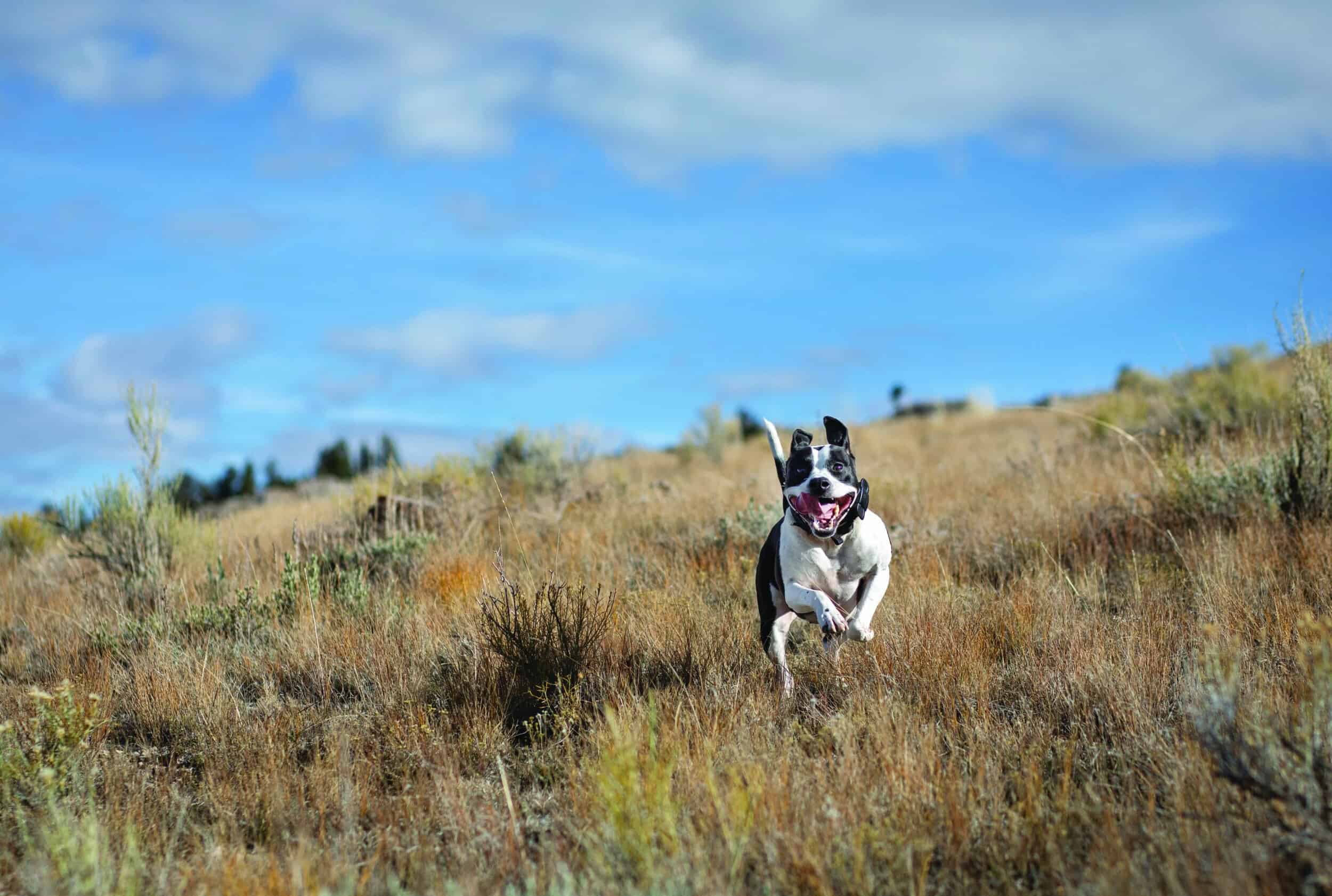Read The
Current Issue
Dog Heaven
Jackson Hole is as much of a playground for dogs as for people.
// By Samantha Simma
After years of forgoing foster fails while hosting sleepovers for dogs that were available for adoption at Jackson’s Animal Adoption Center, my partner and I gifted ourselves a puppy with dark mascaraed eyes, a boxy head, and soft, grey-flecked fur at the height of the Covid pandemic. Since then, Timber—a mutt off the Wind River Reservation whose DNA reveals traces of Australian cattle dog, rottweiler, American pit bull terrier, great Pyrenees, and St. Bernard—has shifted my summertime pursuits from summiting peaks in Grand Teton National Park to trail runs and hikes on the dog-friendly trail systems around Jackson.
Timber may not be able to appreciate Jackson’s iconic views, but I’d be the first to assume that the hiking, camping, biking, backpacking, and socializing opportunities available to him as the dog of a Jackson local have enriched his life. Selfishly, hiking alone will never again be quite as fulfilling as going with Timber in tow.
Cache Creek/Snow King
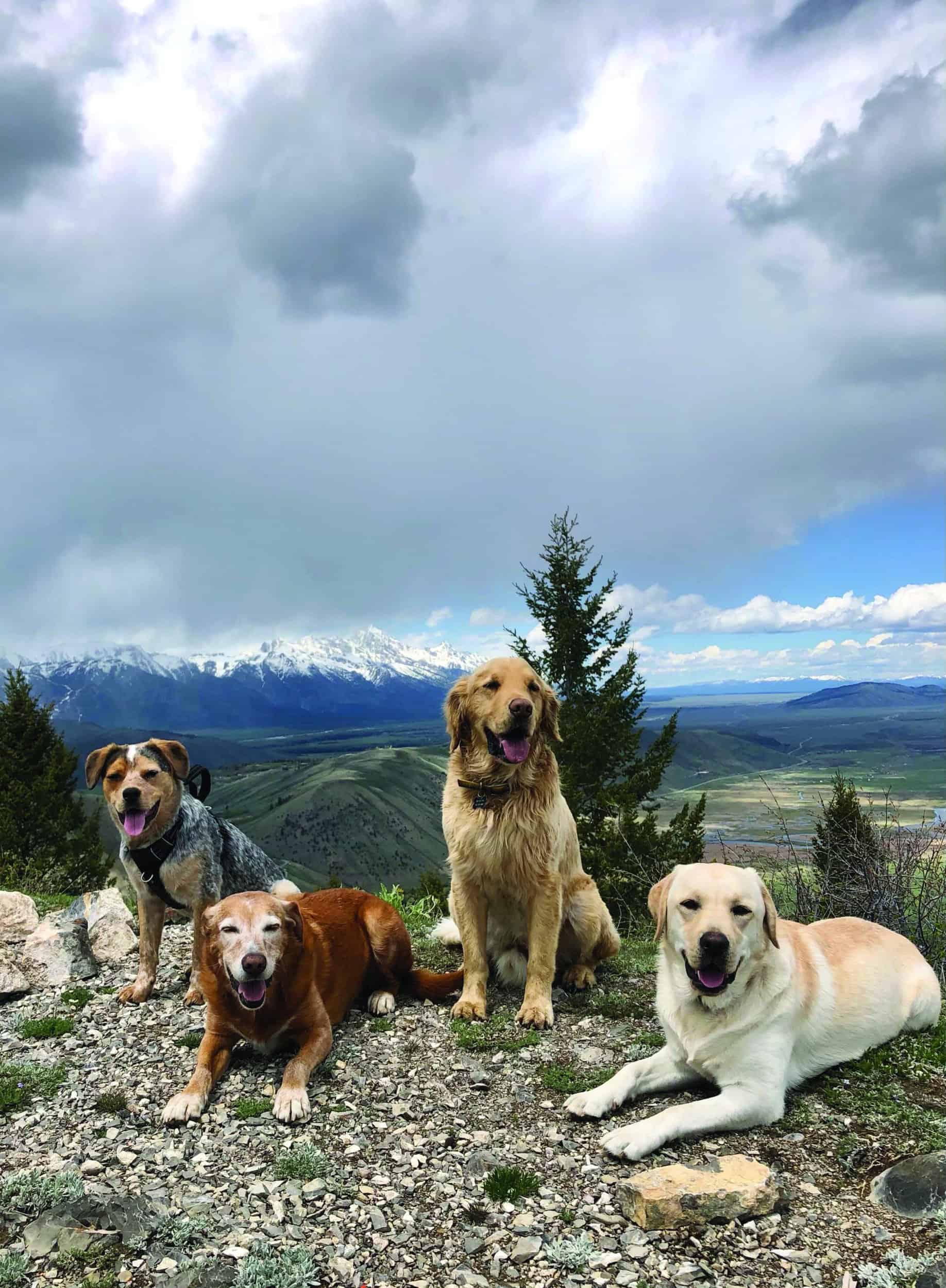
In East Jackson, the Cache Creek/Snow King trail network includes about 20 miles of single- and double-track trails for hiking, mountain biking, and horseback riding. Due to its proximity to downtown—less than one mile from the Town Square—and the great views of the Tetons some of the network’s trails offer, this area is busy with humans, dogs, and wildlife. It might cause anxiety in an introverted dog, especially since most dogs here are off-leash, and also in owners whose dogs are inclined to chase wildlife. (If you want to minimize interactions with wildlife and other dogs, a nearby option is the National Elk Refuge Road; here it is required that all dogs are leashed and, even though it is on a wildlife refuge, there are rarely any animals on the road.) For social dogs though, the Cache Creek trail system is a dream—scents abound, there’s a creek to cool off in (and drink from), and, after leaving the parking lot, leashes are not required.
Emily’s Pond Levee Trail
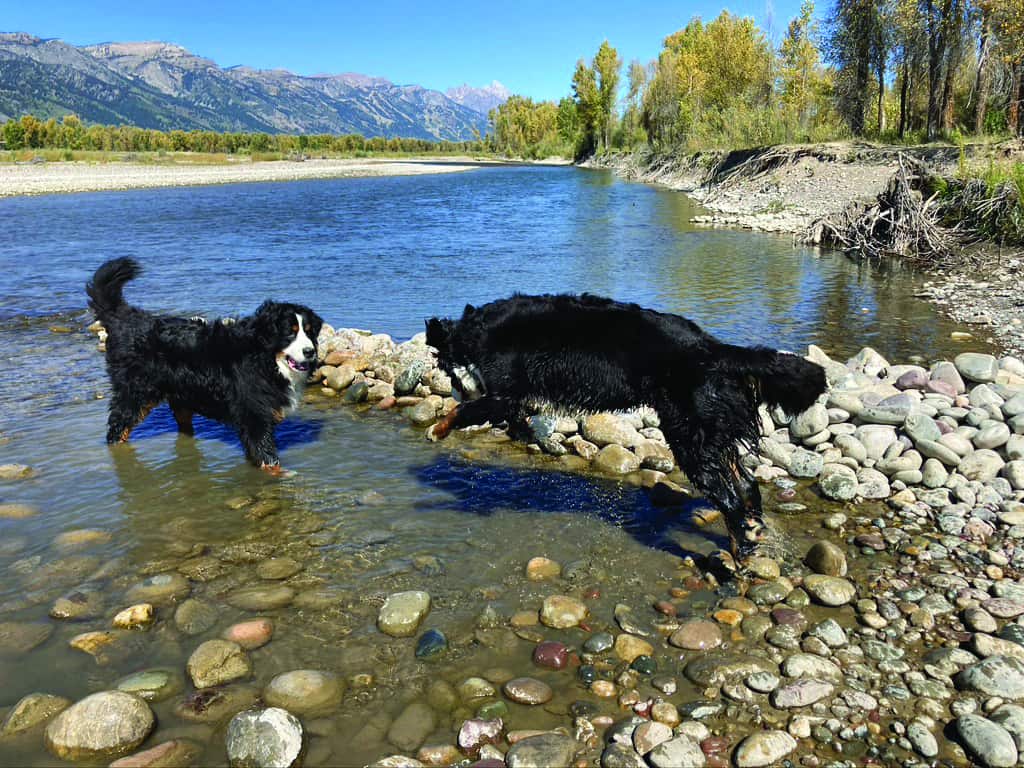
The Emily’s Pond Levee Trail, a wide, gravel path that runs north alongside the Snake River just east of the Highway 22 bridge over the Snake River, might be the single most popular dog-walking spot in the valley. There are trails heading north and south on the levee on the west bank of the Snake River, too.
Ski Lake
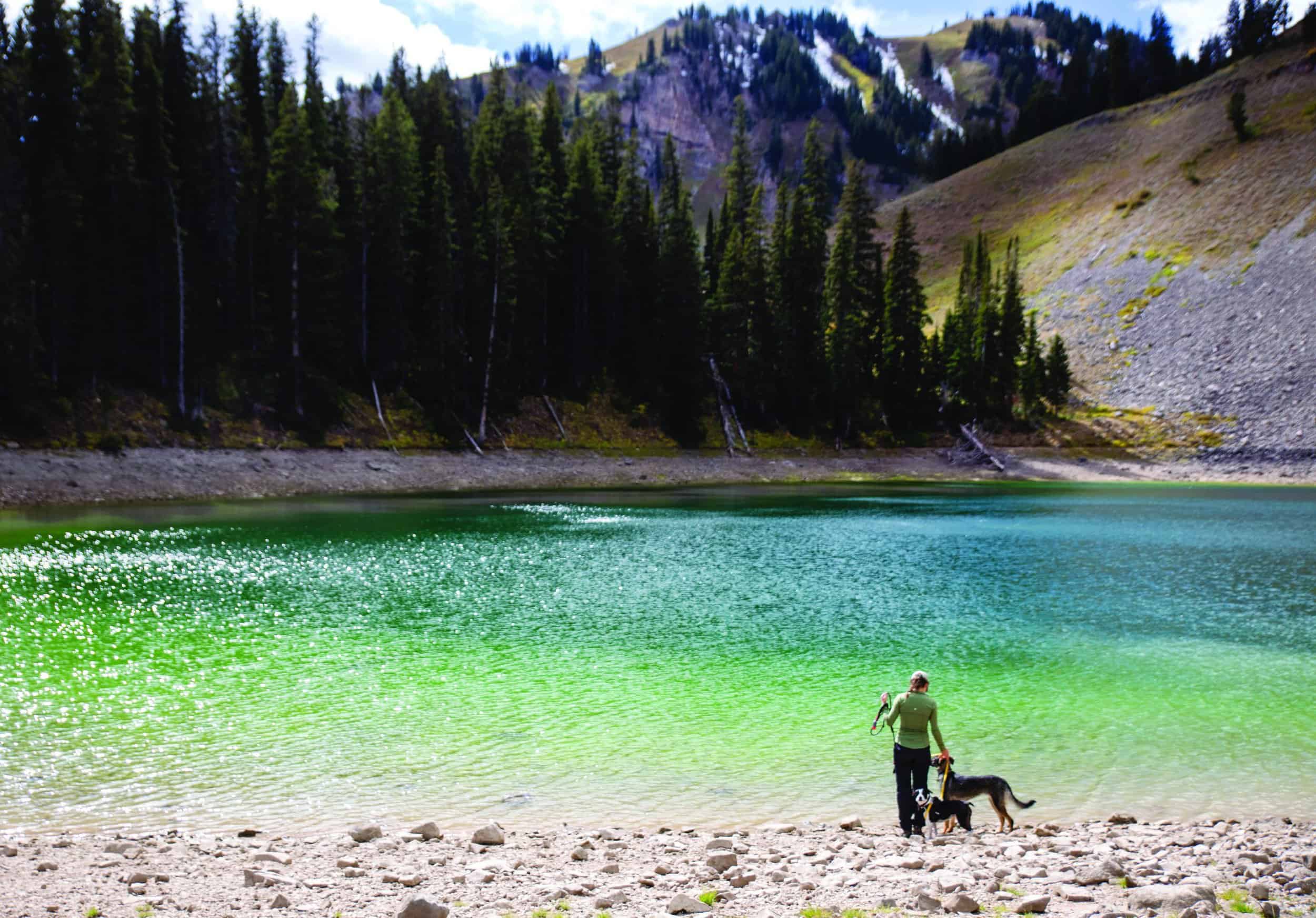
Ski Lake is the most easily accessible alpine lake in the valley and possibly dogs’ favorite adventure. Halfway up Teton Pass, a two-mile trail climbs about 800 feet to a lake from the Phillips Pass Trailhead. Almost all dogs at the lake opt for a swim; the chilly water—Ski Lake is fed by snowmelt—is a harder sell for humans.
History Trail

At the Trail Creek Ranch Trailhead at the base of Teton Pass, the History Trail was a wagon trail, but today is a 2.5-mile hiking trail and horseback riding trail that climbs about 2,000 feet to the top of the pass.
Wildflower Trail
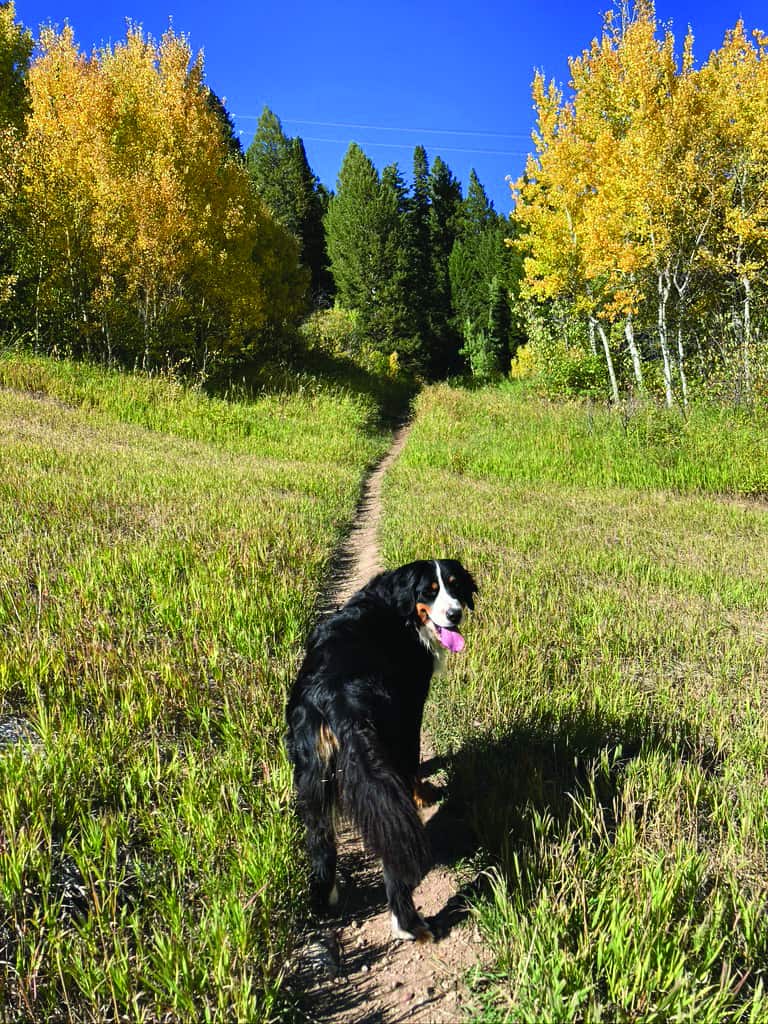
Some trails at the Jackson Hole Mountain Resort are dog friendly. What’s not dog friendly? The 11 miles of trails that are part of the resort’s downhill mountain biking park, where riders descend at high speeds and often catch air. Instead, try the hiker-only Wildflower Trail that connects the base area to the top of the Bridger Gondola, where there’s water for dogs and food for humans (at Piste and Off-Piste Market). Know that dogs are not allowed to ride the Bridger Gondola though, so be prepared to walk back down.
Slide Lake
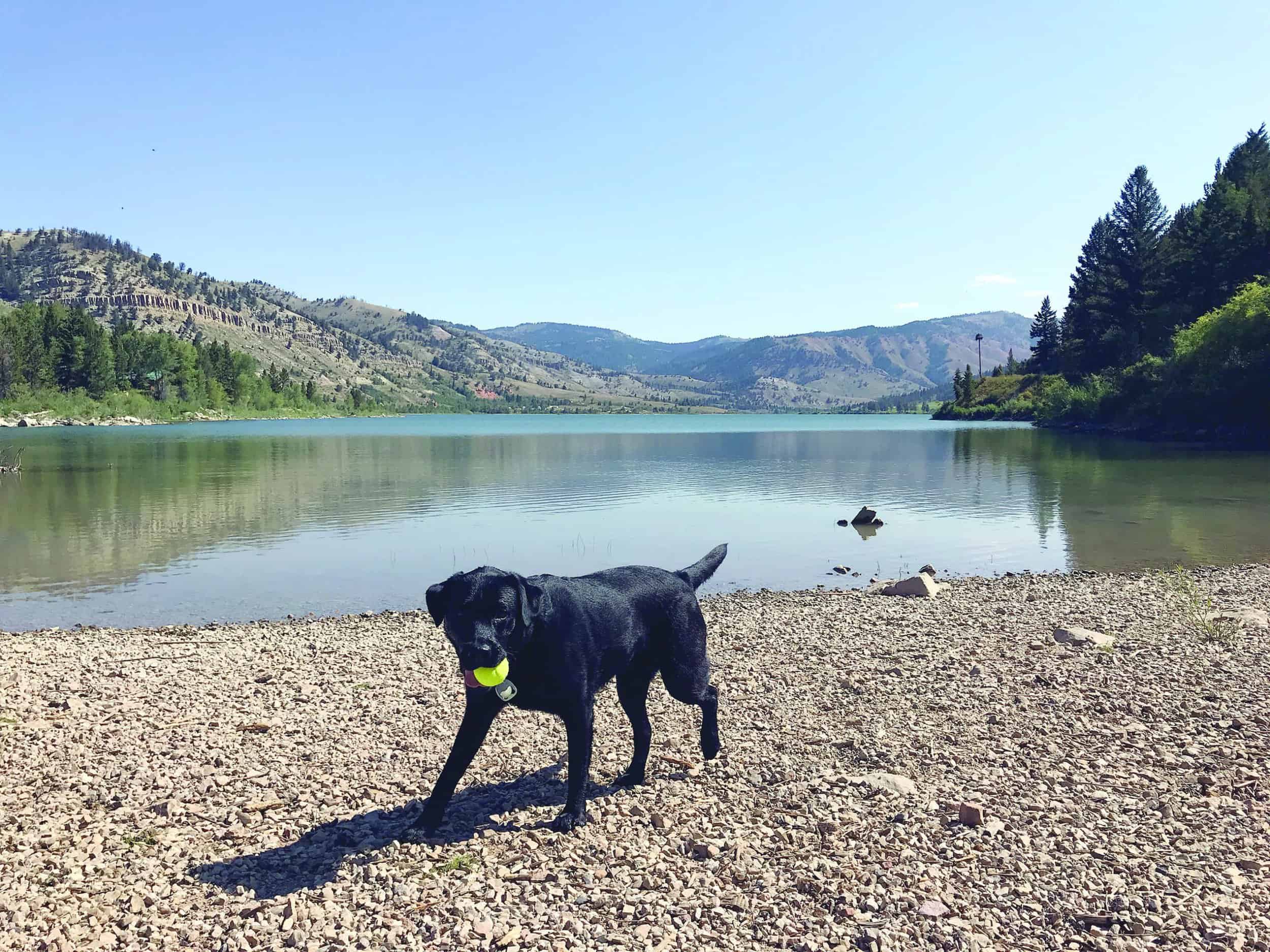
If your dog wants to swim and skip the hiking all together, consider Slide Lake in the Gros Ventre Mountains on the east side of the valley. Here, a campground and day-use area at the lake’s eastern end offer lake access.
Jackson Peak
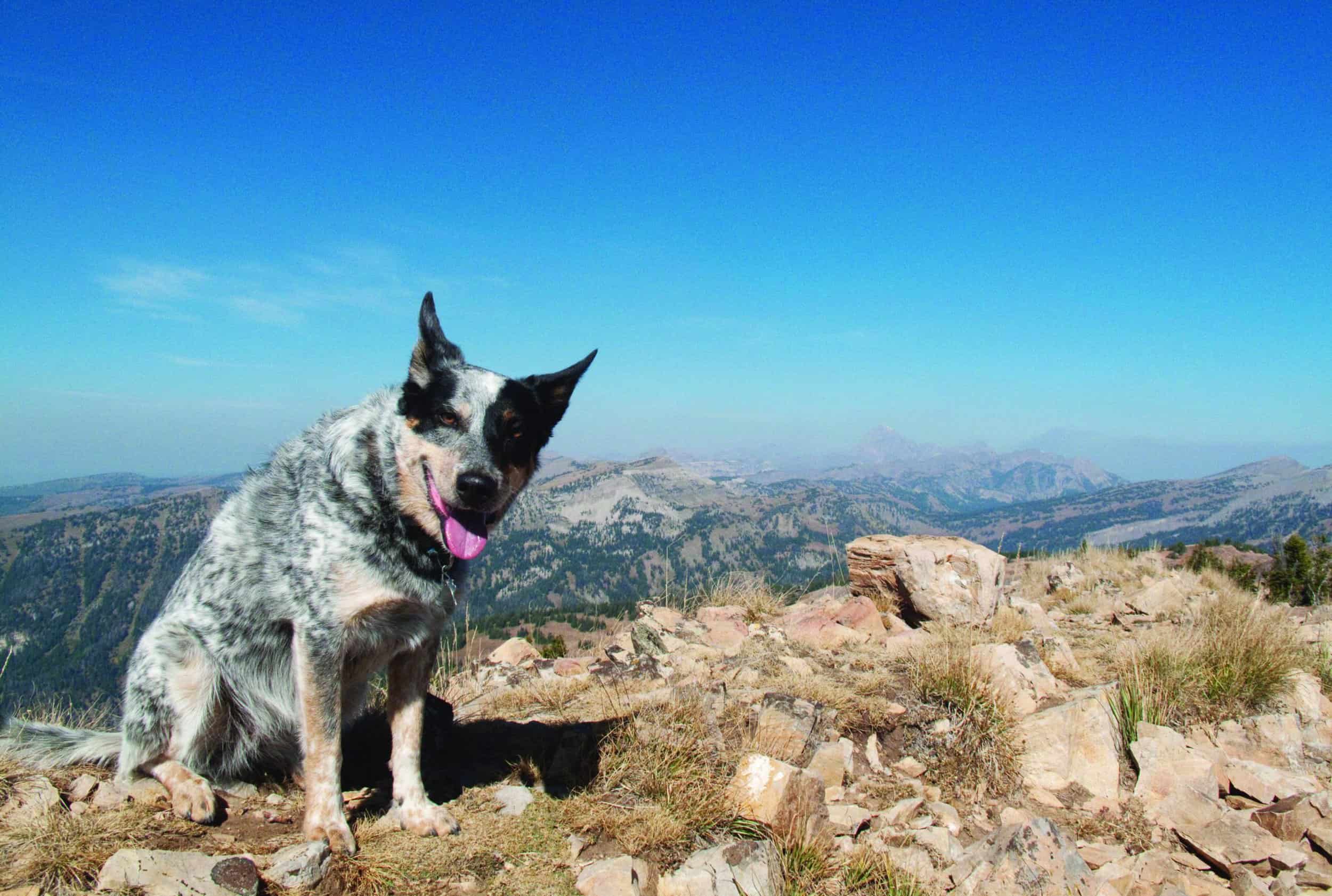
Want to summit a mountain with your dog? Neither Table Mountain nor Sleeping Indian require any technical climbing skills, but both lack water and, for their second half, also lack shade. The hike up 10,741-foot Jackson Peak passes Goodwin Lake at about its halfway point and, while you will eventually get above the tree line, there’s shade for a mile or so past the lake.
Old Pass Road
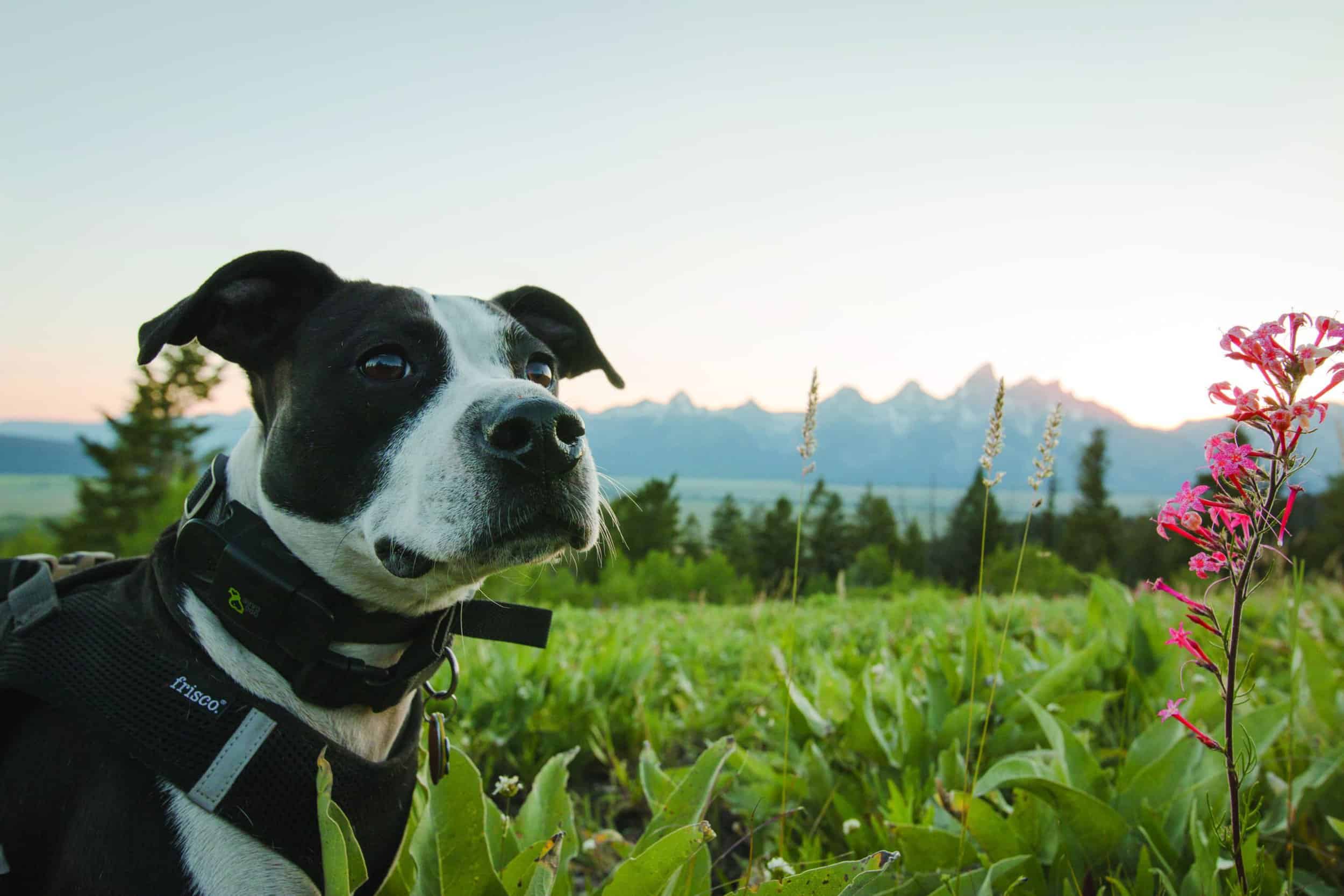
As its name implies, Old Pass Road was the highway to the top of Teton Pass until 1969. Today, it is closed to cars and a favorite with hikers and road cyclists. (The old road is paved all the way from the Trail Creek Ranch Trailhead to the top of the pass.) Dog owners find that this is a less congested—albeit more challenging—alternative to the valley’s pathways. Don’t feel like going all the way to the top? One mile up the road from the trailhead, Crater Lake has a bench for humans to sit on while dogs swim in the tiny lake.
“Leash” is not a bad word
Part of what makes Jackson Hole so special for dogs is that, in most places, they don’t have to be leashed. But that doesn’t mean they should always be off-leash. “If there is wildlife in the area, dogs should be leashed no matter what,” says Eva Perrigo, a certified dog trainer and behavioral counselor, and owner of Star Dog Training, which employs force-free training methods. “It only takes a second for a dog to start chasing. Even if you have a reliable recall, the dog has already initiated the chase and stressed out the wildlife.” A dog-wildlife interaction isn’t just bad for wildlife, but possibly also for dogs; in 2016, the Jackson Hole News&Guide reported the story of a local man whose dog, Memphis, was severely injured while the pair were jogging on a popular trail above Cache Creek. Having startled three moose, the dog was stomped on by the bull among the trio—resulting in a traumatic brain injury and damage to her internal organs.
In busy multi-use areas like Cache Creek, consider using a leash if you’re uncertain how your dog will react to other users and dogs. Also, if you see another dog on a leash, Perrigo says it is your responsibility to leash your dog as well. “We don’t know why that dog is leashed, it could be sick, injured, old, or aggressive. If any of these are true, they have just as much a right to be out and about as you do, so your duty is to respect the space they are asking for,” she says.
Poop Fairies
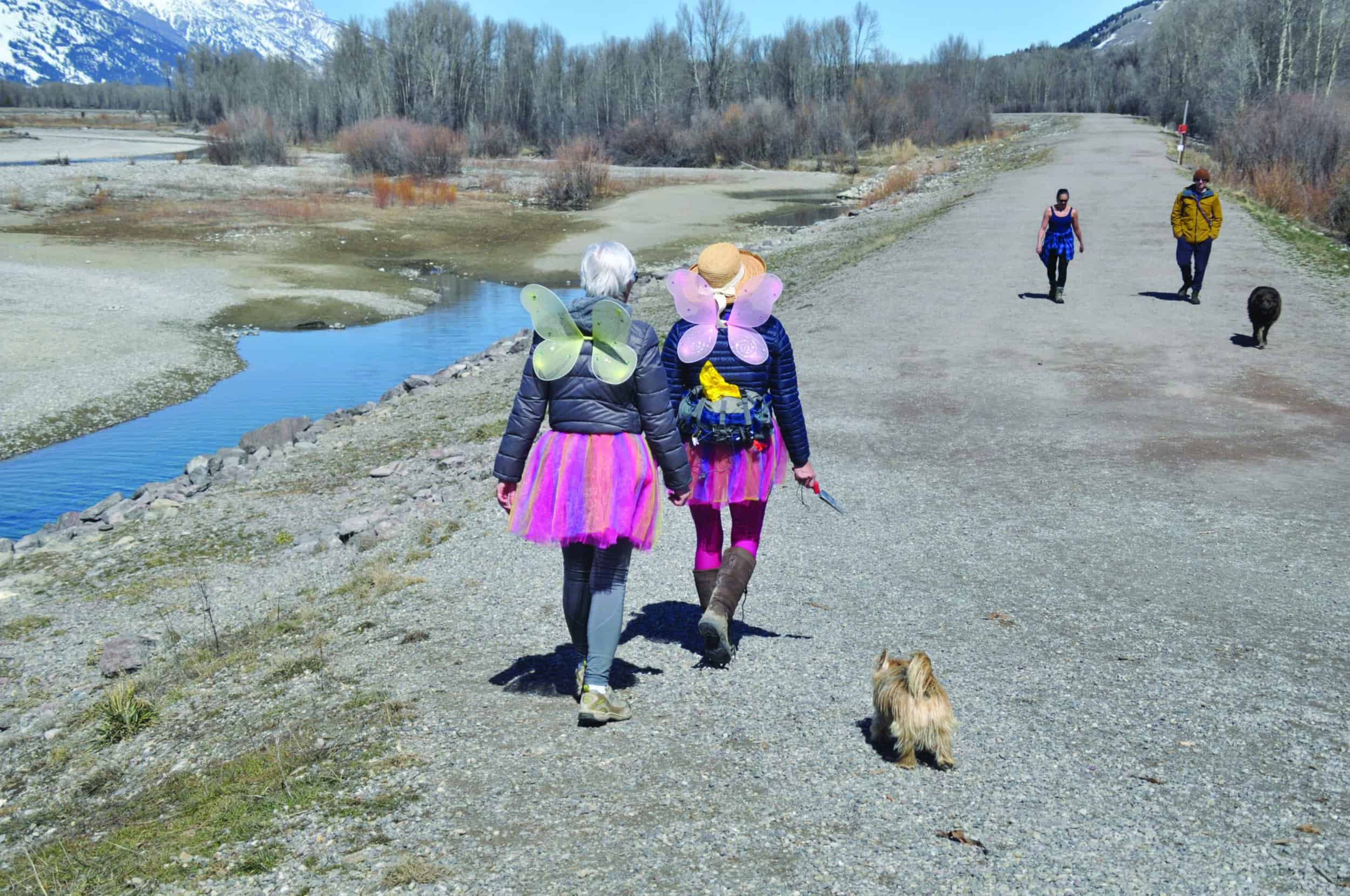
“The Poop Fairies are a group of people who decided that dog poop left behind was a community problem they wanted to put their effort into,” says Jess Farr, PAWS’s program director. “When nutrient-dense dog poop is left behind, it eventually winds up in our waterways. Outside of the pure yuck factor, cleaning up after your dog is one the best things you can do to leave no trace when hiking with your dog in the wilderness.” While these volunteers help to combat the negligence of some dog owners, ultimately the positive and clean trail experience of all trail users depends on the cleanup efforts of individual dog owners. In 2015, the Bridger-Teton National Forest put local dog owners in a time out—temporarily closing trails in the Cache Creek drainage to dogs in order to mitigate an out-of-control waste issue. Follow the winged adventures of the Poop Fairies as they steward a cleaner trail experience at @jhpoopfairy on Instagram. JH

